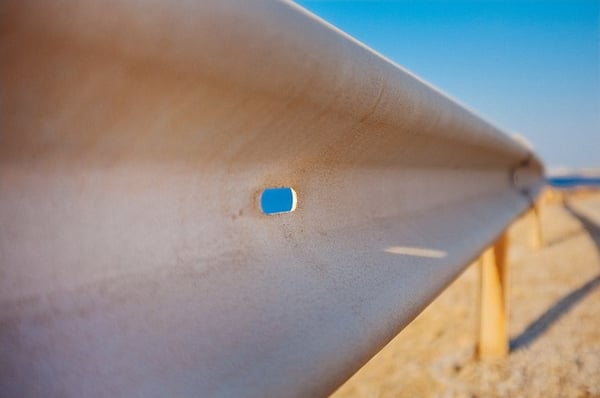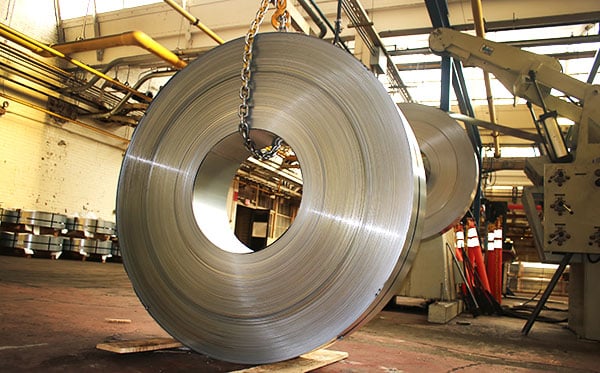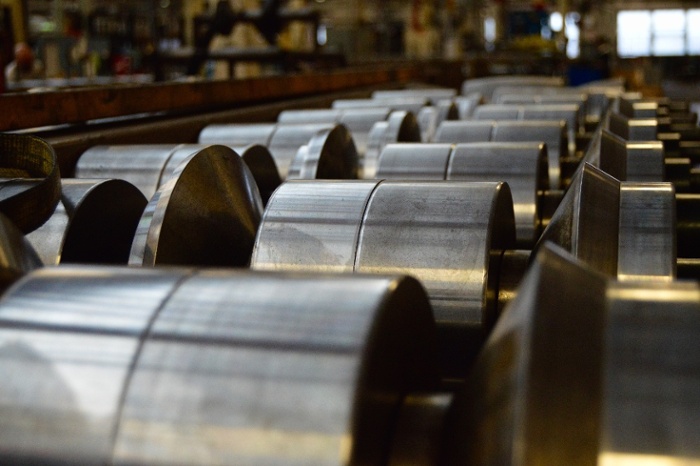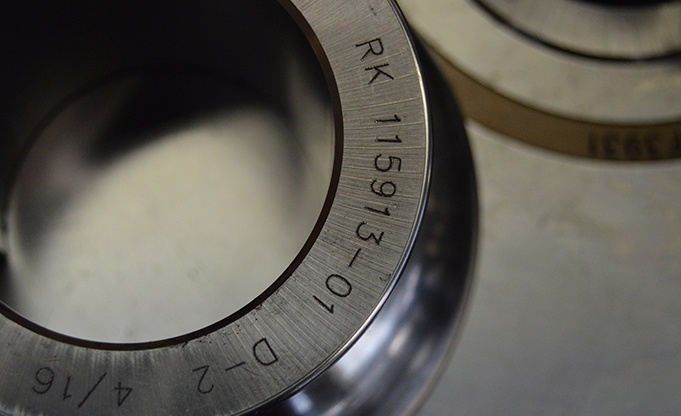3. Commercial Food Storage
Roll forming is used extensively in the commercial food storage industry. It creates the components that go into refrigerators and freezers including:
- Textured paneling for decorative purposes
- Kick plates by the floor that keep dust at bay
- Stainless steel hand rails and protective sills
- Insulated shelving structures that hold the goods
Why choose roll forming for commercial food storage?
Roll forming offers complex profiles, tricky hole patterns, and tight tolerances for final assembly.
4. Solar
 Similar to the power and warehouse distribution industries, roll forming is a major reason why solar power reached its ever-present status in society and is now a viable source of energy. Manufacturers use roll formed parts to hold vast arrays of solar panels at specific angles for years into the future.
Similar to the power and warehouse distribution industries, roll forming is a major reason why solar power reached its ever-present status in society and is now a viable source of energy. Manufacturers use roll formed parts to hold vast arrays of solar panels at specific angles for years into the future.
These components include:
- Robust hat channels, C-channels, & Z-purlins for utility-scale solar farms
- Lightweight ballast trays and mounting structures for commercial roofs
Roll forming allows for proprietary designs, large volumes, and the use of specialized materials. Roll forming also offers in-line punching to allow for easy field assembly.
 5. Trains
5. Trains
Train cars consist of some of the longest, most uniformly shaped components known to man, reaching up to 80 feet long. While train manufacturing is a niche market, from exterior to interior, roll forming is the only way to produce these parts:
- Exterior roof and side panels
- Protective steel sill plates
- Wall and ceiling stiffening channels
- Decorative stainless steel rails
- Stainless steel transition pieces
6. Trailers & Trucks
Let’s start with cargo trailers and delivery trucks. Every type of roll formed channel can be used to build the interior framing/skeleton for the cabs on these things. Also, you’re likely to see some stainless steel trim on the exterior of high-end trailers. The same goes for 18-wheelers, but those also have giant wheel fenders, which are made with a very specific type of roll form machine.
Why is roll forming the preferred method?
Hat and box channels make sturdy, lightweight frames, some parts are finish-critical, and fenders are very wide.
7. Guard Rails & Sign Posts
Ever think about the millions of miles of guard rail that exist on this planet? Much like wheel fenders, roll form companies with dedicated machines produce guard rails at incredible speeds, making them extremely low cost and abundant.
Lastly, the same existential question applies to road signposts. While they can be cold-formed, these posts are most commonly made via “hot” roll forming. In this metal forming process, steel rails are heated to 2300°F before passing through the roll dies.
WHAT MAKES THESE ROLL FORMING PRODUCTS WORK?
In the examples above, custom roll formed shapes are particularly useful due to their ability to be produced at a rapid pace while maintaining design accuracy. Yet it’s also ideal for parts with multi-bend profiles, or those that require high-end finishes.
Hole punching, bending, and cutting to length are all easy to fit into one continuous process, rather than separate steps. In all of these cases, it’s simply more cost-effective and productive to use this tried-and-true method of metal forming.
We hope this list helps you determine if that part you’re designing could ultimately be roll formed. But if you are still uncertain, send us a drawing for a quick compatibility review from our team.
Still doing research? Check out our 'Why Roll Forming?" page via the button below:
(This article was originally published in October 2018 and was recently updated.)









